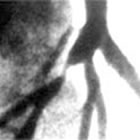| << To Blog Home >> | |
|
|
October 27, 2010 -- 8:55pm EDT To Stent or Not to Stent: That is the Question! Suffice it to say that Dr. Midei does not believe he implanted stents unnecessarily. And his opinion is backed up by two Bills (Dr. William O'Neill of University of Miami and Dr. William Knopf of Piedmont in Atlanta) who were retained by Midei's legal team to review these cases. And who are these cardiologists? Well, Dr. O'Neill often has been quoted on Angioplasty.Org, because he is one of the true pioneers of interventional cardiology, credited with documenting and disseminating the benefits of primary angioplasty as the "gold standard" of treatment for heart attacks (see "Heart Attacks and Angioplasty") -- because of angioplasty and stents, death from heart attacks has been reduced from 25% fifty years ago to 2% today! Dr. Knopf likewise is a widely respected interventionalist who is the COO of the prestigious Piedmont Heart Institute. They have said that they did not see any "unneeded" procedures. Of course, St. Joseph's also retained cardiologists to review the angiograms, among them Dr. Donald Cutlip of Beth Israel Deaconess in Boston, who disagreed with Midei's decision to stent in a number of cases. (Dr. Cutlip is the Executive Director of Clinical Investigation at HCRI, and is widely known for his role in clarifying and setting the current definitions for "stent thrombosis".) So is this a "he said; she said" situation? Or is there some scientific method for determining whether or not a patient needs a stent? One would hope there is, since angioplasty is now 33 years old!! Well, of course, there is -- sort of. I revert to "sort of" because in medicine, we are dealing with human physiology, where there are very few absolutes. But, in the case of the necessity for stents, there actually has been research and clinical trials have been conducted, and the results were quite clear: in January of 2009, the FAME study was published...and it showed that 1/3 of blockages that were judged as "significant" by looking at an angiogram were, in fact, not significant! Using Fractional Flow Reserve (FFR) the actual blood flow through the coronary artery was measured -- and in 1/3 of the cases that looked blocked on the x-ray, they weren't. A bit scary -- to see an angiogram that shows a significant narrowing, and then not stent it? Well the explanation is a bit complicated, but suffice it to say that flow dynamics show that just because a two-dimensional shadow image (the kind produced by an angiogram) implies a narrowing, doesn't mean the blood flow is actually restricted. And FAME's two year results verify this -- of the approximately 500 blockages that looked significant on angiography but were judged not significant via FFR, and were subsequently NOT TREATED, only one went on to cause a myocardial infarction: a very low rate of 0.2%. (It is also the case that a blockage that looks insignificant on an angiogram in fact may be limiting blood-flow and causing ischemia.) Unfortunately in the Maryland Stent Story, FFR was not available at St. Joseph's -- a fact that has also become a point of controversy: the hospital accuses Dr. Midei of not using FFR technology but, according to theheart.org article, Dr. Midei claims:
So the take-away here is that FFR has a number of benefits: one-third less stents, one-third better outcomes -- and should be used everywhere! Yet only 15% or so of cath labs currently have it installed. There are currently two manufacturers of FFR -- Volcano Corporation and St. Jude Medical (as a result of St. Jude's acquisition of Radi Medical Systems in 2008). I wrote about this this past summer in my blog post, "The Un-Stent Wars: Call Out the Fractional Flow Reserves". In any case, one would think that this technology would be more widely used. Perhaps, as a result of controversies like Dr. Midei's, it will be adopted, if only as a way of justifying the placement, or non-placement, of a stent. And, oh yeah, benefiting patients as well! |
|


 Last
week saw the latest chapter of the year-and-a-half "Maryland Stent
Story", starring Dr. Mark G. Midei pitted against Towson-based
St. Joseph's Medical Center. Dr. Midei, accused last year by St.
Joe's
of implanting
almost 600 unnecessary coronary stents and relieved of his privileges,
filed a $60 million fraud
lawsuit against the hospital and its parent company. I won't
go into the details because you can read all about it in the Baltimore
Sun's article by Tricia Bishop "
Last
week saw the latest chapter of the year-and-a-half "Maryland Stent
Story", starring Dr. Mark G. Midei pitted against Towson-based
St. Joseph's Medical Center. Dr. Midei, accused last year by St.
Joe's
of implanting
almost 600 unnecessary coronary stents and relieved of his privileges,
filed a $60 million fraud
lawsuit against the hospital and its parent company. I won't
go into the details because you can read all about it in the Baltimore
Sun's article by Tricia Bishop "